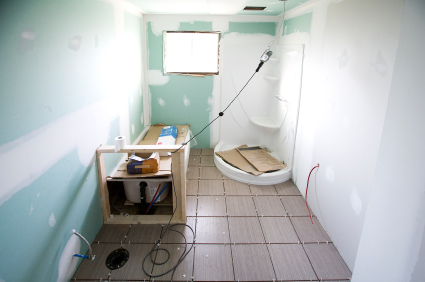In addition to the standard “white board” drywall there is a specialty material made for use in high moisture areas such as bathrooms. It is called “greenboard”. It is a drywall which is able to withstand high humidity without deteriorating. Drywall is easily damaged by exposure to water because it is porous and thus susceptible to the growth of mold.
Greenboard is a form of drywall but is covered in a thicker, more water-resistant paper than standard drywall. The paper is coated with wax to help control moisture absorption. This paper is green, thus the name “greenboard.” Greenboard drywall typically is manufactured with 1/2 inch or 5/8 inch thicknesses, and can be used in any room throughout a building. Greenboard is installed in exactly the same way as standard wallpaper. Screw it to the wall with drywall screws, tape and plaster the seams, sand, primer, and then apply the desired texture or finish.
There have been differing opinions in the past couple of years regarding greenboard. There are some drywall contractors who believe greenboard is no more effective than regular drywall for moisture control. However, this should never be a reason for using waterproof cement board behind tiled areas such as bathroom floors and shower or tub wall areas. Greenboard can be used for walls and ceilings in rooms where there is no direct contact with water, but in laundry rooms and bathrooms, the walls of showers and tub areas and floors should be covered with waterproof cement board as indicated above.
The most common rooms where greenboard drywall would be installed by your drywall contractor would be in the high humidity rooms such as bathrooms, kitchens, laundry rooms, etc.

